Dare to think differently
Team Rosetta 2017-2024





“By harnessing cutting-edge mass spectrometry imaging techniques Rosetta solved the challenge and created detailed Google Earth-like views of tumour metabolism.”
Gemma Balmer-Kemp Head of Research, Cancer Grand Challenges
Cancer Grand Challenges is a global initiative that is building an elite, interdisciplinary community to take on and solve cancer’s most complex problems.
Co-founded by the two largest funders of cancer research in the world, Cancer Research UK and the National Cancer Institute in the US, Cancer Grand Challenges aims to accelerate high-impact research and translate discoveries for public and patient benefit by transforming how team science is conducted.
In 2015, Cancer Grand Challenges set the 3D tumour mapping challenge. In 2017, funded by Cancer Research UK and Emerson Collective, team Rosetta set out to tackle the challenge and alongside team IMAXT find a way of mapping tumours at the molecular and cellular level.
Rosetta planned to do this by developing and applying highly innovative metabolic mapping tools to measure a broad range of metabolites and chart their spatial distribution within tumours more holistically than ever before.
When the challenge was set, progress had been made in understanding specific metabolic hallmarks of cancer in vitro. However, there remained a considerable gap in understanding complete metabolic networks and their rewiring in vivo, especially in patients. To fully understand cancer metabolism, the team would first need to develop multi-scale spatial techniques capable of detecting proteins, amino acids, fatty acids, carbohydrates, vitamins, and lipids simultaneously.

Rosetta united over 70 world-leading physicists, biologists, and chemists with technology innovators and industry partners. Led by Josephine Bunch at the National Physical Laboratory (NPL), the research team comprised of Kevin Brindle (University of Cambridge), Ian Gilmore (NPL), John F. Marshall (Queen Mary University of London), George Poulogiannis (Institute of Cancer Research), Owen Sansom (CRUK Scotland Institute), Zoltan Takats (Imperial College London), and Mariia Yuneva (Francis Crick Institute), as well as Richard Goodwin and Simon Barry of AstraZeneca.
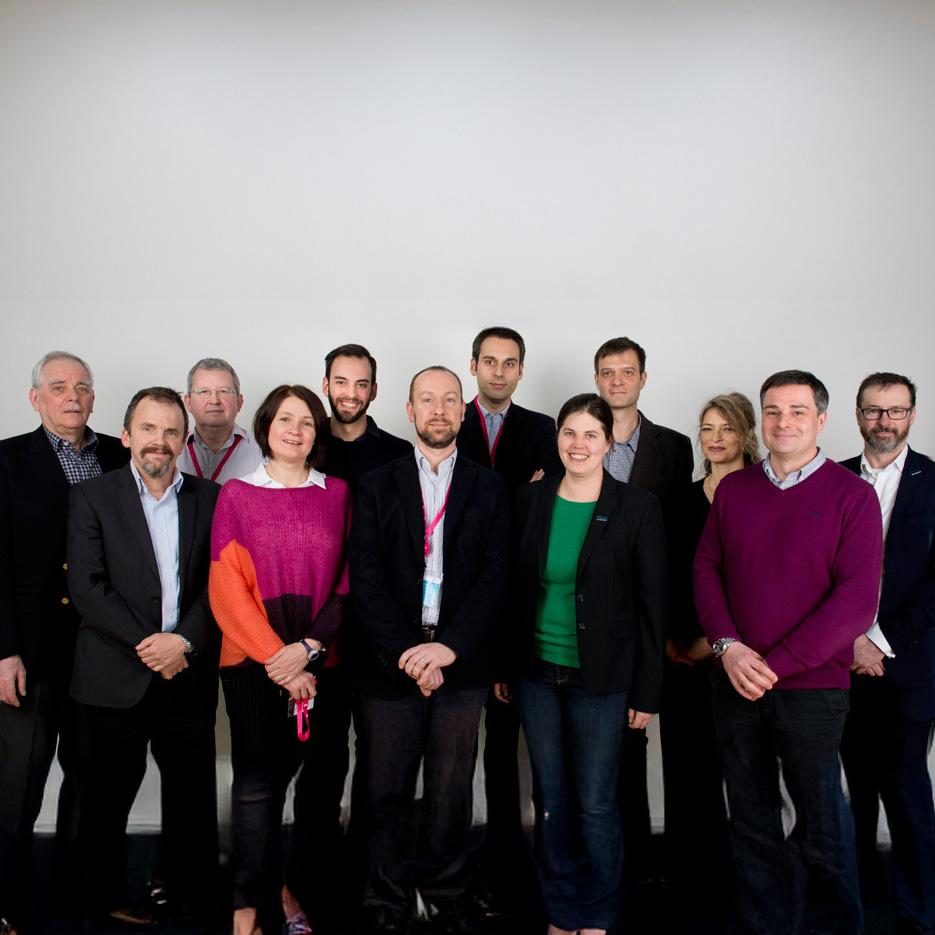

$22m
Amount of funding awarded
42
Number of publications to date
14
Number of postdoctoral researchers trained
Over the course of its funding, the Rosetta team has been at the forefront of the metabolomic mapping field, adding a whole new dimension to cancer diagnosis and treatment.
To enable its findings, the team focused its efforts on mass spectrometry imaging (MSI), which allows the visualisation of molecules, combining the chemical benefits of mass spectrometry with the spatial benefits of imaging. When Rosetta was funded, MSI was a niche technology with limited applications. The team has pioneered novel imaging modalities, allowing the visualisation of endogenous metabolites, proteins, and lipids, in addition to exogenous drugs and drug delivery systems. The techniques developed by Rosetta have allowed the study of key metabolic pathways for the first time.
The team’s collection of new and improved MSI techniques, instruments, and devices, has allowed the successful establishment of a powerful multimodalmultiscale correlative MSI pipeline and an accompanying suite of computational tools. Rosetta’s innovative pipeline has enabled the creation of detailed, spatially resolved maps of tumour metabolism, providing unprecedented insights into how metabolic processes vary both between tumour types and within distinct regions of the same tumour. By integrating MSI with a wide-array of other techniques, the team has revolutionised how tumour heterogeneity is studied, enabling researchers to link molecular, cellular, and functional data in ways never before possible.
The approaches the team developed enable the examination of fixed and frozen samples through to in vivo real-time sampling of patient tumours during surgical procedures. By unifying detection methods, the team can also review and compare findings from in vitro models with ex vivo and in vivo measurements. By leveraging computational approaches to elucidate pathway associations and correlations, Rosetta can distil such complex data into phenotype ‘atlases’, which can be used to guide higher-resolution imaging experiments and other -omic evaluations.
Number of PhD students trained to date
6 5
Number of independent research groups established
In an extremely productive collaboration between industry and academia, the Rosetta platform has been applied by AstraZeneca to answer questions from compound distribution to emerging drug resistance. The team’s MSI platform has now been integrated across the AstraZeneca drug development pipeline and influences over 85% of AstraZeneca’s oncology projects.
Rosetta has demonstrated the value of applying a metabolomics lens to spatial biology, uncovering novel and functional insights into the molecular basis of cancer. Rosetta’s research has shed light on how metabolic dependencies link oncogenic activation, tumour phenotype, and microenvironmental changes. Rosetta’s technical advances have already shown potential for real-time diagnosis and the ability of tumour metabolomic profiling to identify critical and targetable metabolic vulnerabilities in cancer.
Exploring ion suppression in mass spectrometry imaging of a heterogeneous tissue.
ANALYTICAL CHEMISTRY
Quantitation of endogenous metabolites in mouse tumors using massspectrometry imaging.
ANALYTICAL CHEMISTRY
Magnetic resonance imaging is more sensitive than PET for detecting treatment-induced cell death-dependent changes in glycolysis.
CANCER RESEARCH
The intelligent knife (iKnife) and its intraoperative diagnostic advantage for the treatment of cervical disease.
Metabolic fingerprinting links oncogenic PIK3CA with enhanced arachidonic acidderived eicosanoids.
Team Rosetta
Rosetta awarded £17.2m (~$22m)

Rosetta collaborate in the delivery of a quantitative MSI method which allows the study of metabolic heterogeneity within the tumour and the microenvironment. The team begin to build and refine a multimodal, multi-scale MSI pipeline to address the full complexity of tumour heterogeneity.
Connecting the dots
Tackling tumour heterogeneity
Identifying therapeutic targets
Informing precision medicine
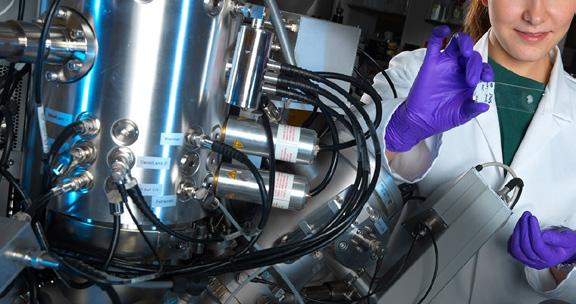

The team compare methodologies to detect changes in glycolysis as a read out for treatment-induced cell death.
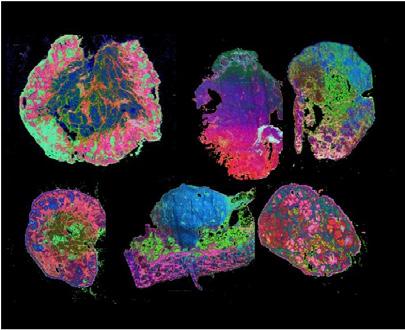

Rosetta demonstrated the utility of the surgical intelligent knife (iKnife), previously developed by members of the team, for real-time diagnosis and highlighted the potential of stratifying cancers into subtypes according to their metabolic phenotype to help guide treatment selection. The iKnife uses rapid evaporative ionisation mass spectrometry (REIMS)-based technology, which the team showed can differentiate normal, preinvasive and invasive cervical cancer tissue in real-time during surgery.

By analysing breast cancer cell lines, patient-derived xenografts and primary tumours, the team identified that disruptions to the PIK3CA kinase pathway cause an increase in the metabolite arachidonic acid. Using REIMS coupled with the iKnife, the team enabled real-time metabolic profiling of tumour tissues and could identify PIK3CA-mutant tumours with high accuracy based on their unique lipidomic signatures. Arachidonic acid also fuels the growth of these breast tumours – revealing a targetable metabolic vulnerability that largely depends on dietary fat restriction.
ILC2-driven innate immune checkpoint mechanism antagonizes NK cell antimetastatic function in the lung.
NATURE IMMUNOLOGY
The amino acid transporter SLC7A5 is required for efficient growth of KRAS-mutant colorectal cancer.
NATURE GENETICS
Method to visualize the intratumor distribution and impact of gemcitabine in pancreatic ductal adenocarcinoma by multimodal imaging.
ANALYTICAL CHEMISTRY
Multi-modal molecular imaging maps the correlation between tumour microenvironments and nanomedicine distribution. THERANOSTICS

MSI provided spatial and biochemical evidence that group 2 innate lymphoid cells induce eosinophilia which creates a glycolytically stressed environment. This impairs natural killer cell function, supressing antitumour immunity and promoting lung metastases.

In colorectal cancer, the team identified potential new therapeutic targets - the glutamine antiporter SLC7A5 in KRAS-driven tumours, as well as the methionine cycle enzyme AHCY in APCdeficient tumours.
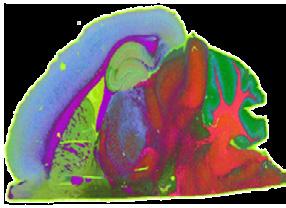

author and Rosetta
leader
is now an EMBL Group Leader at the Institute of Molecular Medicine and Research Fellow at the Institute of Biotechnology, HiLIFE, University of Helsinki, Finland.
The team established the integration of MSI with imaging mass cytometry, as well as histology, transcriptomics and other spatial-omics approaches to produce detailed maps of tumour metabolism at cellular resolution. MSI-based workflows were developed to allow the team to trace drug delivery and distribution in vivo and provide insights into tumour response to treatment, enabling the design of precision medicine strategies. Rosetta also developed MSI approaches with sufficient sensitivity to allow its use on formalin-fixed paraffin-embedded (FFPE) tissues, expanding their utility and further increasing their potential impact in clinical environments.
Atmospheric-pressure infrared laser-ablation plasmapostionization mass spectrometry imaging of formalin-fixed paraffinembedded (FFPE) and freshfrozen tissue sections with no sample preparation.
ANALYTICAL CHEMISTRY

author and Rosetta future leader Rory Steven is now a UK Research and Innovation Future Leaders Fellow and Principal Scientist at the NPL, UK.

Metabolic profiling stratifies colorectal cancer and reveals adenosylhomocysteinase as a therapeutic target.
NATURE METABOLISM


First author and Rosetta future leader Johan Vande Voorde is now an Associate Group Leader at the CRUK Scotland Institute and a Senior Research Fellow at the University of Glasgow, Scotland.
2023
Vitamin B5 supports MYC oncogenic metabolism and tumor progression in breast cancer.
NATURE METABOLISM
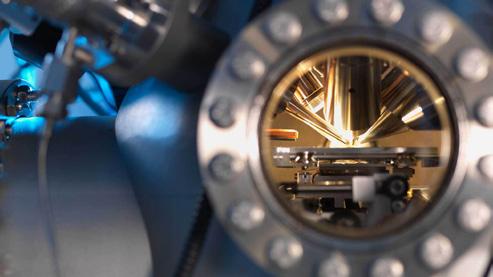
JANUARY 2025
A multimodal imaging pipeline to decipher cell-specific metabolic functions and tissue microenvironment dynamics.
NATURE PROTOCOLS
JANUARY 2025
Visualizing cancer heterogeneity at the molecular and cellular levels: lessons from Rosetta. CANCER DISCOVERY
FEBRUARY 2025
Use of metabolic imaging to monitor heterogeneity of tumour response following therapeutic mTORC1/2 pathway inhibition.
DISEASE MODELS & MECHANISMS
MAY 2025
Cell-intrinsic metabolic phenotypes identified in patients with glioblastoma, using mass spectrometry imaging of 13C-labelled glucose metabolism
NATURE METABOLISM

Team Rosetta
Nic Jones
Former Cancer Grand Challenges Scientific Committee Member
Using its correlative MSI approaches to explore mammary intra-tumour differences in metabolism, the team demonstrated that pantothenic acid (also known as Vitamin B5) is associated with areas of high MYC levels. This is driven by MYC upregulating the multivitamin transporter SLC5A6, responsible for pantothenic acid transport. Rosetta went on to highlight dietary restriction of pantothenic acid, which was ultimately being used to fuel the Krebs cycle, as a potential option to restrain tumour growth.


First author and Rosetta future leader Peter Kreuzaler is now a Principal Investigator at the Cologne Excellence Cluster for Aging and Aging-Associated Diseases (CECAD) and the University of Cologne, Germany.

The team publish a comprehensive imaging pipeline that combines confocal microscopy, electron microscopy, and nanoscale secondary ion mass spectrometry (NanoSIMS) to trace stable isotope-labelled metabolites at subcellular resolution. The pipeline enables identification of specific immune cell types within the tumour microenvironment and maps their uptake of labelled glucose and glutamine, offering a powerful tool for dissecting cellspecific metabolic functions and interactions within complex tissues.
In glioblastoma, Rosetta identify three metabolic subtypes that could inform treatment selection by using metabolic labelling of human tumours in vivo. The team infused patients with labelled glucose and subsequently used MSI on rapidly excised tumour sections, combining this with spatial transcriptomics on contiguous sections.

“It’s hard to believe now but back then this was a challenge of epic nature: the technologies were just emerging and the thought of combining them or using them on primary tumours or metastases was a mere pipedream. The Rosetta and IMAXT teams helped to make this a reality and their technological advances will be critical in the development of enduring therapies.”

Rapid Evaporative Ionisation Mass Spectrometry
Infrared- Rapid Evaporative Ionisation Mass Spectrometry
Matrix-Assisted Laser Desorption/Ionisation
Infrared laser desorption coupled to plasma post ionisation
Desorption Electrospray Ionisation/ Desorption Electro-Flow Focusing Ionisation
OrbiTrap Secondary Ion Mass Spectrometry
cryo- OrbiTrap Secondary Ion Mass Spectrometry
Nanoscale Secondary Ion Mass Spectrometry
*REIMS allows measurements to be made directly at the point of surgery. The team introduced REIMS coupled to infrared laser sampling, IR-REIMS, which allows lasers in robotic surgery to be coupled to mass spectrometry endpoints. This also provides an ex vivo mass spectrometry imaging system, meaning that measurements from the lab and in the clinic can be unified, aiding translation.
The methods developed, optimised and integrated into a powerful imaging platform by team Rosetta include: Cancer Grand Challenges
Pioneering the MSI field, the team has vastly improved chemical coverage, sensitivity and biochemical annotation and expanded the diversity of samples these methods can be used upon. To create comprehensive molecular maps of tumours the team enabled multimodal imaging, combining MSI approaches with diverse technologies across a range of scales.
Additionally, the Rosetta team developed data integration and visualisation tools to manage and analyse complex datasets, enabling insights into tumour biology and therapeutic responses. Adding to the team’s scientific legacy, these fundamental tools and techniques will drive further discoveries in the cancer field and beyond.
Rosetta equipped early career researchers with cutting-edge skills in spatialomics and computational biology, cultivating the next generation of cancer research leaders. The team championed cross-institutional and multidisciplinary collaboration as a core training mechanism. Movement between Rosetta labs enabled early career researchers to be immersed in diverse research cultures and gain exposure to biology, chemistry, physics, and mathematics in a single programme, fostering a holistic scientific outlook that continues to shape careers.

Patient advocates are embedded into Cancer Grand Challenges teams and are important members of the teams we fund to address cancer’s toughest challenges.
The Rosetta team included two patient advocates, Magali Garrett and Harry C. Hall who interacted regularly with researchers at the NPL. This two-way exchange not only fostered better communication skills among Rosetta scientists, but challenged them to think beyond molecular pathways and consider how their discoveries might ultimately benefit people living with cancer.
The advocates’ involvement was further deepened through a VOICE patient advocate training programme, which was led by Rosetta co-investigator John Marshall. VOICE has trained several Cancer Grand Challenges patient advocates, not just those associated with Rosetta, and served as a model for empowering patients to actively engage with scientific research teams.
Rosetta’s groundbreaking work played a key role in embedding mass spectrometry imaging in the cancer research toolkit. The team’s success has driven the widespread adoption of these technologies, across both academia and industry, positioning spatial metabolomics as a cornerstone of the spatial biology revolution.
By applying these innovative metabolic mapping tools, the team has already uncovered metabolic complexities informing on tumour behaviour, prognosis and response to treatment. The team’s work has critically demonstrated the utility of metabolic mapping in identifying new therapeutic targets.
The Rosetta pipeline has laid the foundation for an enduring shift in how cancer metabolism is studied, connecting molecular insight with patient outcomes in a way that is already influencing the next wave of precision medicine.
